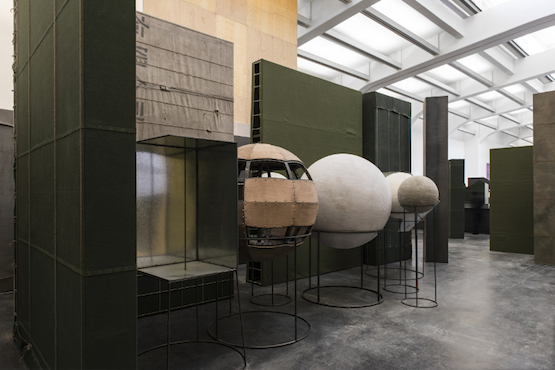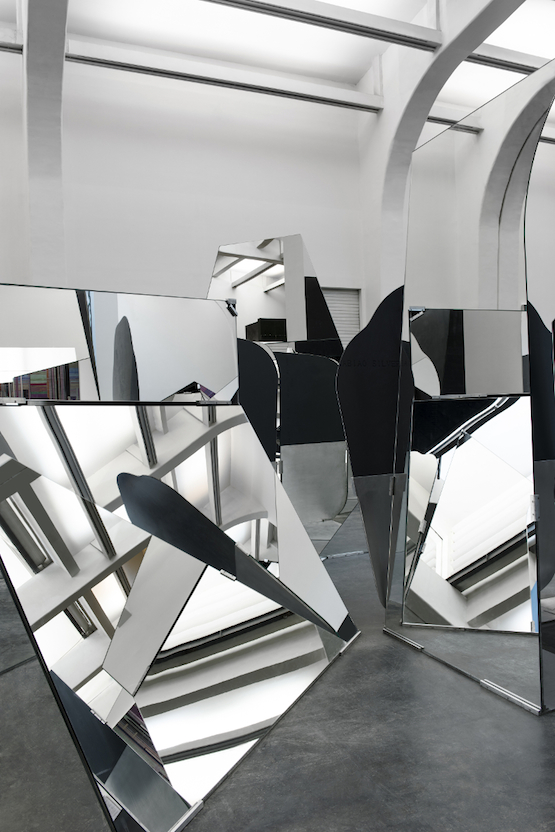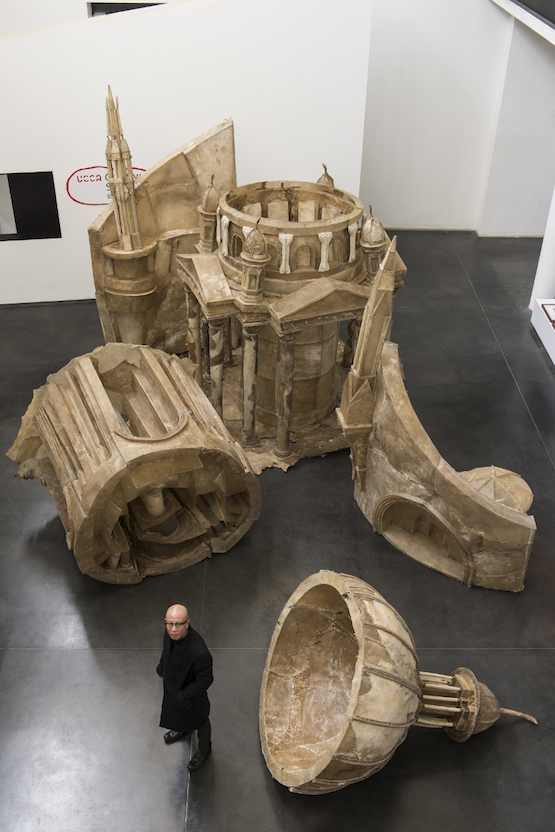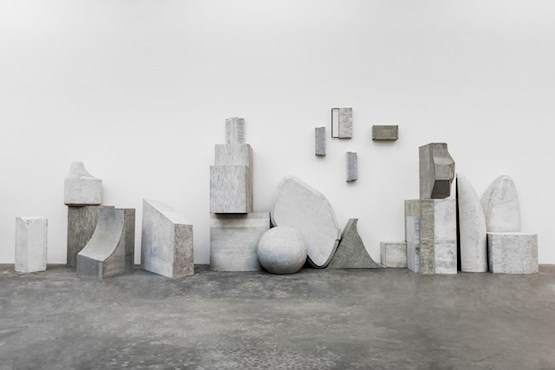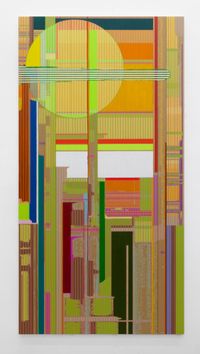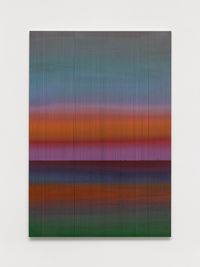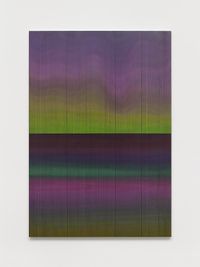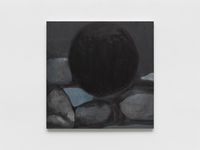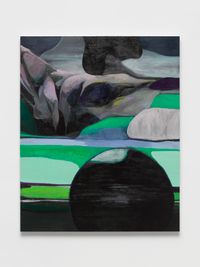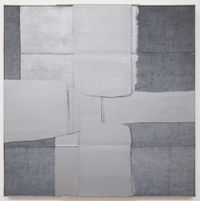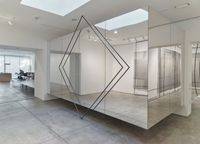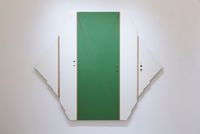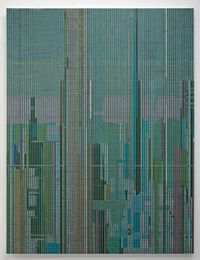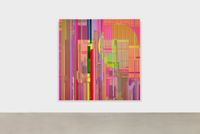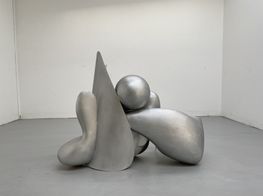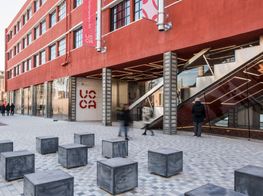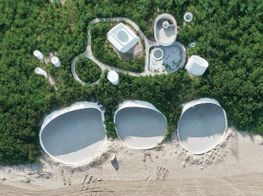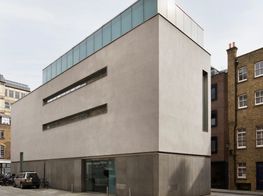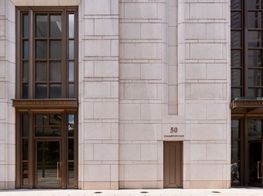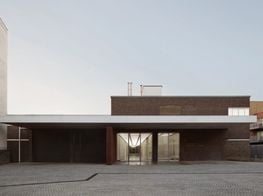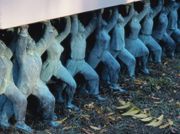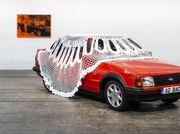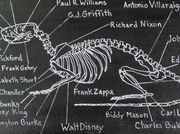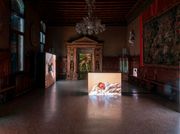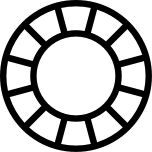Liu Wei
Liu Wei. Photo: Dora Tang. Courtesy Ullens Center for Contemporary Art
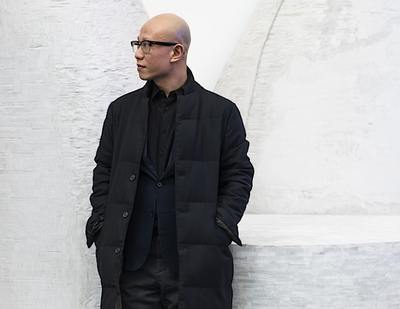
Liu Wei. Photo: Dora Tang. Courtesy Ullens Center for Contemporary Art
Beijing artist Liu Wei's oeuvre includes assemblages of door frames, use of excrement as an artistic material, and a work made from dog chews. Born in 1972, Liu Wei graduated from the China Academy of Art, Hangzhou, in 1996 and went on to win the CCAA Award for Best Artist in 2008. His solo show at Ullens Center for Contemporary Art in Beijing, entitled Liu Wei: Colours, is curated by Philip Tinari and Guo Xi.
This is a large and ambitious show and all of the work was completed in the last year. Is productivity philosophically important to your practice?
I deliberately left very limited time to make these works. After endlessly converting time, energy, thinking and realisation, I almost tossed the works into the space. To me, your own aim and attitude determines the output. An artist defines his own job, and one endlessly undertakes that activity to understand reality and himself.
The show includes a wide range of materials and several large forms. I'm curious about your studio—would you please describe it?
Presently, my studio lies on the border between the urban and rural environments of Beijing. It is a rather large space. Before my taking over, the space was used as a furniture gallery. People working with me there include excellent graduates, young artists from art academies and workers from all over the country. A number of them worked previously in various fields; now they are using their skills and experiences to assist me creating artworks, or the other way around—me assisting them to create artworks. At the same time, their experiences and ways of working influence my work as well.
With names like Enigma, and Puzzle, some of your works seemingly aim to avoid the viewer's comprehension, or they have meanings and motivations that you don't want to be explicit about. Either way, it can be difficult to discuss them, except perhaps to speculate, or to bathe silently in what Keats called "negative capability". What are the sorts of discussions you hope people have about your work, and can you give examples of some of your favorite discussions you've had about these works so far?
To me, Puzzle, Enigma and other works included in the exhibition try first and foremost not to avoid the viewer's comprehension, but mine. These are related chiefly to my own frustration, confusion and bafflement. To me, artworks do not provide answers, do not educate. It is not that I am not interested in discussions or revealing meanings, it is just that I am with the viewers, in the quest for meaning. To speculate or to submerge in "negative capability" is something I do very often in the face of artworks.
I hope the viewers could use my works as starting points or points of reference in their discussions, contributing to their own thinkings. In this sense, art means freedom. Not only am I free as a creator, the viewers are free as spectators as well. Catherine David commented that my works deceive fetishism; to me this is a very, very important comment. Gao Shiming saw in my works the problematics of equality. My son likes the video installation Shapeshifting a lot, and called this perpetual change of colors a billboard. I like his comment very much.
Your formalism strikes me as avant garde, even radical, for Chinese art but it is aesthetically radical, not socially or politically radical. Am I wrong about this? Do you think your works contain social and political commentaries or aim at social and political change?
I do not think it is fair for me to judge my own artworks, especially in a historical context, or to judge others' evaluations. I just wish to point out that, as a subject, an individual, certainly I am very much concerned with the social and the political, and that artworks that are apparently very formalist could be extremely political as well. I am not living in a void, and I do think the political, the social and the aesthetic are inseparable. To me, to my work, form is the political par excellence, and I do not think the political in art should be presented as politics.
The work, Bite it No. 3 involves an incredible reuse of a finished commodity. Can you tell me what drove you to first use chew toys as an art material and how your use of it has evolved?
Many years ago, I was surprised by the common forms of dog chew as a pet product. Many dog chews are in fact in the shape of little houses, very architectural. My point of departure back then was this means nothing to the dog. However it is visually, the dog only wishes to consume the product in a very specific, somehow brutal manner. The discrepancy between human's wishful thinking and the dog's desire perhaps is very much similar to the discrepancy found in the relationship between the artist and the viewer. If we are to consider the concept of the "artwork", the specific form of the artwork or where this form originates from is not that important a question to me. What is important is that it is already itself the incarnation of desire and power. I hope a work as such could pave the way for a reconsideration of the concept of the "artwork" for us, what it really is, or how it operates in the relationship between the creator and the viewer.
Likewise, I'm interested in Look! Books—how did you begin working with books and why did you evolve towards more abstract forms?
The books were initially inspired by an imagination of time and knowledge. This unbearable weight itself reminds us of the forsaken lesson: our existences are conditional on omnipresent gravity. This is the purest perception, like a rock, and the first book sculpture was a rock, a meteor in fact. To me, Look! Book is not abstract. It is an imagination of civilisation, and its form reminds me that the real does not come from verisimilitude, but comes from perceptual and spiritual truthfulness. Abstraction processes this perception with reduction, and what is left is the essence of the works.
I believe the Untitled paintings are part of your _Purple Air _series, which started as cityscapes and have evolved to become abstract grids. They remind me of Jiang Zhi's computer error paintings. What is the effect you're going for in these works?
The paintings work as marks of colors, a change in the look and attitude of the exhibition. Be it the Purple Air series or the Liberation series, the paintings question from the very beginning our ways of seeing. All images are political, as we have already lost our "natural" status. To me, everything on the computer screen is naturally present, and therefore not much intervention or creation is necessitated. I face millions of choices, and choices create reality. This is what abstraction is to me.—[O]
Liu Wei: Colors continues at UCCA until April 17.

